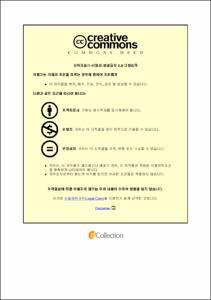혈관형성억제제로 치료받은 재발성 교모종 환자에서 혈관크기 및 관류영상을 이용한 vascular habitat을 통한 예후 예측: 전향적 연구에서의 검증
- Abstract
- 연구배경: 혈관형성억제제는 모든 재발성 교모종 환자에서 효과를 보이지 않지만 혈관형성억제제에 대한 치료 반응 평가를 위한 영상의학적인 지표는 현재 제한적이다. 이에 혈관형성억제제로 치료 받은 재발성 교모종 환자에서 종양진행시간 예측을 위해 관류 및 혈관 크기 정보를 이용한 vascular habitat을 개발 및 검증하고 하였다.
연구방법: 본 연구는 혈관형성억제제로 치료 시작 전 dynamic susceptibility contrast 및 vessel architectural imaging을 시행한 재발성 교모종 환자 69명을 대상으로 하였다. Vascular habitat은 vessel size index (VSI) 와 relative cerebral blood volume (rCBV) 정보를 이용하였다. Vascular habitat과 종양진행시간과의 연관성을 Cox 비례 위험 회귀 분석을 통해 분석하였다. 또한, 전향적으로 모집된 환자군 (ClinicalTrials.gov identifier; NCT04143425) 에서 vascular habitat을 이용하여 치료반응군을 분류하고자 하였다.
연구결과: rCBV 및 VSI를 이용하여 high angiogenic, intermediate angiogenic 및 low angiogenic habitat을 구성하였다. High angiogenic 및 intermediate angiogenic habitat은 유의하게 짧은 종양진행시간을 예측하였다 (위험 비율: 2.78 및 1.82, largest P = .003). High angiogenic habitat은 rCBV보다 높은 예측력을 보였다 (위험 비율: 2.15). High angiogenic 및 intermediate angiogenic habitat을 합친 vascular habitat은 rCBV보다 약간 높은 concordance probability index를 보였다. Vascular habitat은 전향적 환자군에서 치료반응군과 비반응군으로 분류하였다 (P = .059).
결론: 관류 및 혈관크기 정보를 이용한 vascular habitat은 혈관형성억제제로 치료받은 재발성 교모세포종 환자에서 종양진행시간을 예측하였고 전향적 환자군에서 치료 반응군을 분류하였다.
|Background: Anti-angiogenic therapy may not benefit all patients with recurrent glioblastomas, and imaging biomarker predicting treatment response to anti-angiogenic therapy is currently limited. We aimed to develop and validate vascular habitats based on perfusion and vessel size to predict time to progression (TTP) in patients with recurrent glioblastomas treated with bevacizumab.
Methods: Sixty-nine patients with recurrent glioblastomas treated with bevacizumab who underwent pretreatment MRI with dynamic susceptibility contrast imaging and vessel architectural imaging were enrolled. Vascular habitats were constructed using vessel size index (VSI) and relative cerebral blood volume (rCBV). Associations with vascular habitats and TTP were analyzed using Cox proportional hazard regression analysis. In a prospectively enrolled validation cohort consisting of 15 patients (ClinicalTrials.gov identifier; NCT04143425), stratification of TTP was demonstrated by Kaplan-Meier method (log-rank test) using vascular habitats.
Results: Three vascular habitats consisting of high, intermediate and low angiogenic habitats were identified with rCBV and VSI. Both high angiogenic and intermediate angiogenic habitats were significantly associated with a shorter TTP (hazard ratio [HR], 2.78 and 1.82, respectively; largest P = .003). High angiogenic habitat demonstrated stronger predictive value than rCBV (HR, 2.15). Concordance probability index of vascular habitat combining high and intermediate angiogenic habitats was slightly higher than rCBV alone (0.74 vs. 0.72). Vascular habitats stratified patients to good or poor responder in a prospective cohort (P = .059).
Conclusions: Perfusion- and vessel size-derived vascular habitats predicted TTP in recurrent glioblastomas treated with anti-angiogenic therapy and aided patient stratification in a prospective validation cohort.
- Issued Date
- 2022
- Awarded Date
- 2022-02
- Type
- dissertation
- Affiliation
- 울산대학교
- Department
- 일반대학원 의학과
- Advisor
- 박지은
- Degree
- Doctor
- Publisher
- 울산대학교 일반대학원 의학과
- Language
- eng
- Rights
- 울산대학교 논문은 저작권에 의해 보호 받습니다.
- Appears in Collections:
- Medicine > 2. Theses (Ph.D)
- 파일 목록
-
-
Download
 200000602076.pdf
기타 데이터 / 1.56 MB / Adobe PDF
200000602076.pdf
기타 데이터 / 1.56 MB / Adobe PDF
-
Items in Repository are protected by copyright, with all rights reserved, unless otherwise indicated.